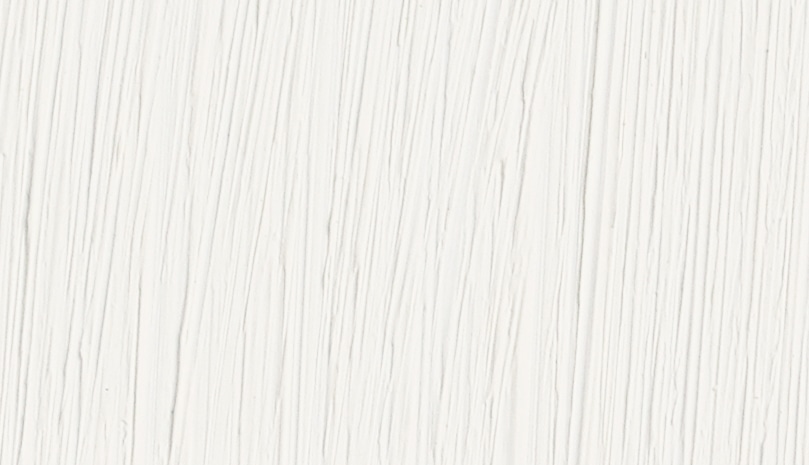Series 3
Cremnitz White
2 (No. 307)

Ⓥ VEGAN
A NOTE FOR EU AND UK ARTISTS: We have received revised guidelines from The Environment Agency stating that applications for restoring or maintaining Works of Art created after 1992 cannot be approved under the REACH Regulations.
Compliance with these rules is essential as the Environment Agency conducts regular audits. For information on sourcing lead paint for historic buildings, please visit Historic England’s website.
Thank you for your understanding. Feel free to reach out if you have any questions.
Sincerely,
MH
Inorganic – Created for fun, I put this version of Cremnitz White into my range because of walnut oil. This combination of pigment and walnut oil produces wonderful qualities, a favorite of which is translucency. Another is the brushing quality, which makes painting with Cremnitz so rewarding. These qualities allow the artist to create wonderful flesh tones and thick, translucent brush strokes, thus providing the artist with a feel for the way the Old Masters painted—with ease and flow.
| Colour Index | PW1 |
| Drying | Slow |
| Transparency | Semi-Transparent |
| Lightfastness | Excellent |
| Oil Content | Very Low |
| Oil Type | Walnut Oil |
| Tint Power | Average |
| Toxicity | Toxic |
| ASTM D-4236 | ✔ |
| Prop 65 | ✔ |
Continue Reading
The use of walnut oil in paint can be traced back even further than that of linseed. When 15th century artists began to add oil to their tempera colours it was walnut oil that seemed the obvious choice. Jan van Eyck in Flanders and Antonello da Messina in Italy both knew of its handling properties; from that time on it was widely used by just about all the great artists, being more a question of who did not use it rather than who did.
I thought it would be interesting to bring back this oil as a binder for lead white. It survived as the binder for the white made by French colourmen selling to the Impressionists, but it seems to have fallen out of use by the end of the 19th century. I believe the reason for this was its expense. Even today it costs about 3 times the price of linseed oil. But since lead paint needs little oil, the increased cost is less evident. Some accounts I have read speak of its tendency to go rancid, but I suspect this is less of a reason for its demise and more an offered excuse to drop it in favour of other, cheaper oils. Upon researching this matter I can find no evidence of the oil spoiling in any way, particularly while incorporated into the form of an oil paint.
There was in fact good reason why walnut oil was preferred as a binder for whites: it has the reputation for yellowing slightly less than linseed, and so paler and cooler colours bound with it underwent less change in drying. The film of dry walnut-bound paint is not quite as strong as that bound with linseed, but it is stronger than that of poppyseed oil, and this permits walnut-bound paint to be overpainted in a way which would risk later cracking if poppyseed oil had been used. Walnut oil dries at a rate comparable to linseed. I have read accounts of how it was particularly useful for the very detailed work demanded by work such as portraiture. I suppose the works of the 15th century masters cited above demonstrate just how refined its handling could be.
It is the feel of this paint under the brush, I think, which constitutes the most compelling argument for its revival. My artist friends have characterized its texture with words like “voluptuous” and “silken”. There is certainly a flow to it which is quite distinct from that experienced using the other oils. One can sense how this had to be the only means by which those precise yet creamy highlights of ruff collars and shot silks were attained by baroque portraitists. Whilst retaining the properties we so value in lead white, walnut oil adds to this paint a cool smoothness which is quite unique. Some of the artists who have tried it tell me that from now on they will paint only with this white.
The use of walnut oil in paint can be traced back even further than that of linseed. When 15th century artists began to add oil to their tempera colours it was walnut oil that seemed the obvious choice. Jan van Eyck in Flanders and Antonello da Messina in Italy both knew of its handling properties; from that time on it was widely used by just about all the great artists, being more a question of who did not use it rather than who did.
I thought it would be interesting to bring back this oil as a binder for lead white. It survived as the binder for the white made by French colourmen selling to the Impressionists, but it seems to have fallen out of use by the end of the 19th century. I believe the reason for this was its expense. Even today it costs about 3 times the price of linseed oil. But since lead paint needs little oil, the increased cost is less evident. Some accounts I have read speak of its tendency to go rancid, but I suspect this is less of a reason for its demise and more an offered excuse to drop it in favour of other, cheaper oils. Upon researching this matter I can find no evidence of the oil spoiling in any way, particularly while incorporated into the form of an oil paint.
There was in fact good reason why walnut oil was preferred as a binder for whites: it has the reputation for yellowing slightly less than linseed, and so paler and cooler colours bound with it underwent less change in drying. The film of dry walnut-bound paint is not quite as strong as that bound with linseed, but it is stronger than that of poppyseed oil, and this permits walnut-bound paint to be overpainted in a way which would risk later cracking if poppyseed oil had been used. Walnut oil dries at a rate comparable to linseed. I have read accounts of how it was particularly useful for the very detailed work demanded by work such as portraiture. I suppose the works of the 15th century masters cited above demonstrate just how refined its handling could be.
It is the feel of this paint under the brush, I think, which constitutes the most compelling argument for its revival. My artist friends have characterized its texture with words like “voluptuous” and “silken”. There is certainly a flow to it which is quite distinct from that experienced using the other oils. One can sense how this had to be the only means by which those precise yet creamy highlights of ruff collars and shot silks were attained by baroque portraitists. Whilst retaining the properties we so value in lead white, walnut oil adds to this paint a cool smoothness which is quite unique. Some of the artists who have tried it tell me that from now on they will paint only with this white.
Series 3
Cremnitz White 2
(No. 307)

Ⓥ VEGAN
Inorganic – Created for fun, I put this version of Cremnitz White into my range because of walnut oil. This combination of pigment and walnut oil produces wonderful qualities, a favorite of which is translucency. Another is the brushing quality, which makes painting with Cremnitz so rewarding. These qualities allow the artist to create wonderful flesh tones and thick, translucent brush strokes, thus providing the artist with a feel for the way the Old Masters painted—with ease and flow.
Continue Reading
The use of walnut oil in paint can be traced back even further than that of linseed. When 15th century artists began to add oil to their tempera colours it was walnut oil that seemed the obvious choice. Jan van Eyck in Flanders and Antonello da Messina in Italy both knew of its handling properties; from that time on it was widely used by just about all the great artists, being more a question of who did not use it rather than who did.
I thought it would be interesting to bring back this oil as a binder for lead white. It survived as the binder for the white made by French colourmen selling to the Impressionists, but it seems to have fallen out of use by the end of the 19th century. I believe the reason for this was its expense. Even today it costs about 3 times the price of linseed oil. But since lead paint needs little oil, the increased cost is less evident. Some accounts I have read speak of its tendency to go rancid, but I suspect this is less of a reason for its demise and more an offered excuse to drop it in favour of other, cheaper oils. Upon researching this matter I can find no evidence of the oil spoiling in any way, particularly while incorporated into the form of an oil paint.
There was in fact good reason why walnut oil was preferred as a binder for whites: it has the reputation for yellowing slightly less than linseed, and so paler and cooler colours bound with it underwent less change in drying. The film of dry walnut-bound paint is not quite as strong as that bound with linseed, but it is stronger than that of poppyseed oil, and this permits walnut-bound paint to be overpainted in a way which would risk later cracking if poppyseed oil had been used. Walnut oil dries at a rate comparable to linseed. I have read accounts of how it was particularly useful for the very detailed work demanded by work such as portraiture. I suppose the works of the 15th century masters cited above demonstrate just how refined its handling could be.
It is the feel of this paint under the brush, I think, which constitutes the most compelling argument for its revival. My artist friends have characterized its texture with words like “voluptuous” and “silken”. There is certainly a flow to it which is quite distinct from that experienced using the other oils. One can sense how this had to be the only means by which those precise yet creamy highlights of ruff collars and shot silks were attained by baroque portraitists. Whilst retaining the properties we so value in lead white, walnut oil adds to this paint a cool smoothness which is quite unique. Some of the artists who have tried it tell me that from now on they will paint only with this white.
The use of walnut oil in paint can be traced back even further than that of linseed. When 15th century artists began to add oil to their tempera colours it was walnut oil that seemed the obvious choice. Jan van Eyck in Flanders and Antonello da Messina in Italy both knew of its handling properties; from that time on it was widely used by just about all the great artists, being more a question of who did not use it rather than who did.
I thought it would be interesting to bring back this oil as a binder for lead white. It survived as the binder for the white made by French colourmen selling to the Impressionists, but it seems to have fallen out of use by the end of the 19th century. I believe the reason for this was its expense. Even today it costs about 3 times the price of linseed oil. But since lead paint needs little oil, the increased cost is less evident. Some accounts I have read speak of its tendency to go rancid, but I suspect this is less of a reason for its demise and more an offered excuse to drop it in favour of other, cheaper oils. Upon researching this matter I can find no evidence of the oil spoiling in any way, particularly while incorporated into the form of an oil paint.
There was in fact good reason why walnut oil was preferred as a binder for whites: it has the reputation for yellowing slightly less than linseed, and so paler and cooler colours bound with it underwent less change in drying. The film of dry walnut-bound paint is not quite as strong as that bound with linseed, but it is stronger than that of poppyseed oil, and this permits walnut-bound paint to be overpainted in a way which would risk later cracking if poppyseed oil had been used. Walnut oil dries at a rate comparable to linseed. I have read accounts of how it was particularly useful for the very detailed work demanded by work such as portraiture. I suppose the works of the 15th century masters cited above demonstrate just how refined its handling could be.
It is the feel of this paint under the brush, I think, which constitutes the most compelling argument for its revival. My artist friends have characterized its texture with words like “voluptuous” and “silken”. There is certainly a flow to it which is quite distinct from that experienced using the other oils. One can sense how this had to be the only means by which those precise yet creamy highlights of ruff collars and shot silks were attained by baroque portraitists. Whilst retaining the properties we so value in lead white, walnut oil adds to this paint a cool smoothness which is quite unique. Some of the artists who have tried it tell me that from now on they will paint only with this white.
| Colour Index | PW1 |
| Drying | Slow |
| Transparency | Semi-Transparent |
| Lightfastness | Excellent |
| Oil Content | Very Low |
| Oil Type | Walnut Oil |
| Tint Power | Average |
| Toxicity | Toxic |
| ASTM D-4236 | ✔ |
| Prop 65 | ✔ |
